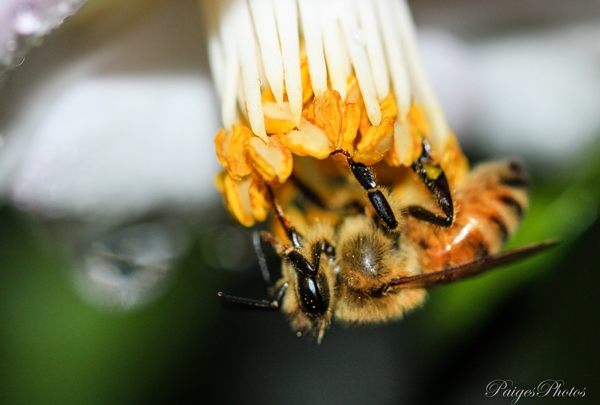Rainy Day Macros
The rain doesn't seem to be letting up this week in Baton Rouge, Louisiana. Determined to still get a few pictures as a part of my new photo-a-day effort in 2013, I put on my raincoat, screwed my 100mm macro lens onto my Canon T3i, and ventured outside. My new 100mm Canon macro lens is a gem. It can reproduce an object the size of my camera's image sensor, known as 1:1 magnification. This means that if I take a picture of a 2 centimeter long insect, the insect figure in my picture will also be 2 centimeters long. A macro lens can focus on an object even when your lens is very close to it, something that most non-macro lenses can't do.
Macro photography is all about capturing fine detail and close-up images. Macro photography is harder than it would seem. Not only do you usually need to get very close to the subject of your photo (not always an easy task), but close-up photography with a long macro lens presents challenges such as camera shake and finicky focusing.
"Macro" lenses specifically designed for close-up work, with a long barrel for close focusing and optimized for high reproduction ratios, are one of the most common tools for macro photography... True macro lenses, such as the Canon MP-E 65 mm f/2.8 or Minolta AF 3x-1x 1.7-2.8 Macro, can achieve higher magnification than life size, enabling photography of the structure of small insect eyes, snowflakes, and other minuscule objects. (Wiki)
Imagine that you are looking at a specimen under a microscope, the extreme of macro photography. In this case, the subject of the image is even larger than in real life, like 10:1 magnification or 100:1 magnification. The slightest movement of the subject or your camera introduces blur and can throw your subject out of focus. You typically need lots of light for macro photography. Again, think of a microscope... you wouldn't be able to see anything without special lighting systems. Without ample light, it becomes nearly impossible to hold your camera still enough to capture a sharp image.
I don't like to carry my tripod everywhere, so I am usually trying to capture close-up images by hand. This is quite difficult. Even the slightest movement of your body from breathing can shake your camera enough to throw your subject out of focus. This challenge arises as you get closer to your subject, trying to focus on the head of a small insect on a flower, for example.
For this picture, I used the flash on my camera to overcome poor lighting conditions. For macro photography, the general rule is to set your shutter speed (how long your camera's shutter stays open to take the picture) at 1 / (the length of your lens - 100mm for my macro lens). I tried to focus carefully and hold my camera very still to capture this shot! Part of the bee is out of focus (you can see how the back of his wings are a bit blurry), but this isn't always a bad thing depending on the artistic effect that you want. Photographers refer to this as depth of field. Macro lenses deliver a narrow depth of field, which can be good for isolating your subject with a blurry background. However, a narrow depth of field can also be a challenge when you want the entire body of an insect to be in focus, for example. I feel like I did pretty well with this image for hand-held macro!
National Geographic provides some great tips on Macro photography here.
If you have some macro photography tips or information, please share them below!


